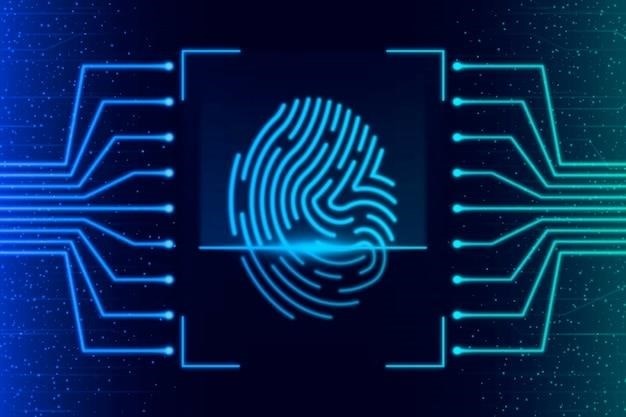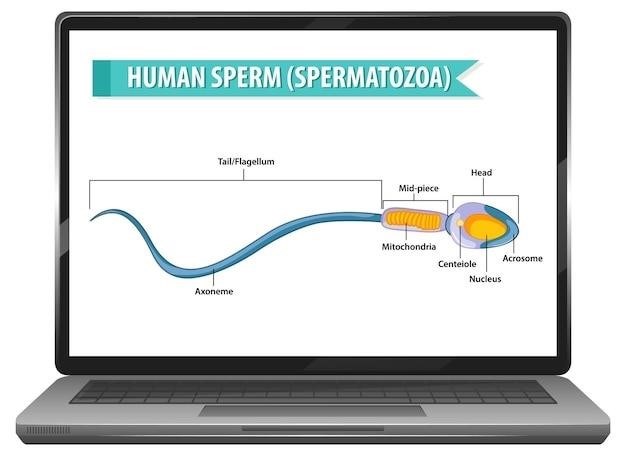DNA Fingerprinting⁚ A Comprehensive Guide
DNA fingerprinting, also known as DNA profiling, is a powerful technique that analyzes unique patterns in an individual’s DNA to establish identity or kinship․ This guide explores the science behind DNA fingerprinting, its various applications, and the steps involved in creating a DNA fingerprint․
Introduction to DNA Fingerprinting
DNA fingerprinting is a revolutionary technique that has transformed various fields, including forensic science, paternity testing, and medical diagnosis․ This technique utilizes the unique variations in an individual’s DNA sequence to create a distinctive fingerprint, akin to a bar code that distinguishes one person from another․ The principle behind DNA fingerprinting lies in the fact that every individual possesses a unique genetic blueprint, inherited from their parents․ This genetic blueprint, encoded in the DNA, contains specific repeating sequences known as variable number tandem repeats (VNTRs) that are highly variable among individuals․
These VNTRs serve as the basis for DNA fingerprinting, as their distinct patterns and lengths differentiate one person’s DNA from another’s․ The process involves isolating and analyzing these VNTRs to generate a unique fingerprint that can be used for identification purposes․
The Science Behind DNA Fingerprinting
The foundation of DNA fingerprinting lies in the concept of polymorphism, which refers to the natural variations in DNA sequences among individuals․ These variations are primarily attributed to differences in the number of repeating units within specific DNA segments, known as variable number tandem repeats (VNTRs)․ The process of DNA fingerprinting involves isolating and analyzing these VNTRs, which act as unique markers for each individual․ These markers are often referred to as “minisatellites” or “microsatellites,” depending on the length of the repeating unit․ The variations in the number of repeats within these VNTRs create distinct patterns that can be used to distinguish one person’s DNA from another’s․
To analyze these VNTRs, DNA fingerprinting employs a combination of techniques, including restriction enzyme digestion, gel electrophoresis, and hybridization with probes․ Restriction enzymes are used to cut the DNA at specific sequences, generating fragments of varying lengths․ These fragments are then separated based on their size using gel electrophoresis, resulting in a unique banding pattern that represents the individual’s DNA profile․
Applications of DNA Fingerprinting
DNA fingerprinting has revolutionized various fields, leaving an indelible mark on criminal investigations, paternity testing, and medical diagnostics․ The technique’s ability to identify individuals with remarkable accuracy has made it a cornerstone of forensic science․ In criminal investigations, DNA fingerprinting plays a crucial role in linking suspects to crime scenes by comparing DNA samples from evidence with those of potential perpetrators․ This powerful tool has helped solve countless cold cases and ensure justice for victims․
Beyond forensic applications, DNA fingerprinting has become a valuable tool in paternity testing, resolving disputes about biological parentage․ By comparing the DNA profiles of a child, alleged father, and mother, paternity tests can establish with a high degree of certainty whether an individual is the biological father․ DNA fingerprinting has also found application in medical diagnostics, aiding in the identification of genetic disorders and tracking the inheritance of specific genes within families․ This has led to the development of personalized medicine, tailoring treatment plans to individual genetic predispositions․
Forensic Science
In the realm of forensic science, DNA fingerprinting has emerged as an indispensable tool for solving crimes and bringing perpetrators to justice․ The technique’s ability to identify individuals with unparalleled accuracy has revolutionized criminal investigations․ By comparing DNA samples collected from crime scenes with those of suspects, investigators can establish a definitive link, providing irrefutable evidence in court․ DNA fingerprinting has been instrumental in solving cold cases, exonerating wrongly convicted individuals, and providing closure to families who have suffered loss․
The application of DNA fingerprinting in forensic science extends beyond linking suspects to crime scenes․ It can also be used to identify victims, especially in cases where bodies are badly decomposed or fragmented․ DNA fingerprinting has also become a valuable tool in identifying human remains in mass disasters, such as plane crashes or natural calamities․ By leveraging the power of DNA profiling, forensic scientists can piece together the puzzle of a crime, bringing perpetrators to justice and providing solace to victims’ families․
Paternity Testing
Paternity testing, a cornerstone of family law and personal identity, has been transformed by the advent of DNA fingerprinting․ This technique offers a highly accurate and reliable method for determining biological parentage․ By comparing the DNA profiles of a child and an alleged father, paternity testing can establish a definitive link, resolving legal disputes and providing peace of mind․ The process typically involves collecting DNA samples from the child, the alleged father, and, in some cases, the mother․
The results of paternity testing can have significant implications for child support, custody arrangements, and inheritance rights․ They can also provide valuable information for individuals seeking to understand their family history or to establish a connection with a biological parent․ The accuracy and reliability of DNA fingerprinting have made it the gold standard for paternity testing, replacing traditional methods that were less precise and prone to errors․ This technology has empowered individuals to seek answers about their lineage and to navigate the complexities of family relationships with greater certainty․
Medical Diagnosis
DNA fingerprinting has emerged as a valuable tool in medical diagnosis, offering insights into genetic predispositions, disease susceptibility, and personalized treatment options․ By analyzing an individual’s DNA, healthcare professionals can identify genetic markers associated with specific diseases, providing early detection and preventive measures․ This approach can significantly impact patient care by enabling tailored treatment strategies based on individual genetic profiles․ For example, DNA fingerprinting can help identify mutations in genes associated with cancer, paving the way for personalized therapies and targeted interventions․
Moreover, DNA fingerprinting plays a crucial role in prenatal diagnosis, allowing doctors to screen for genetic disorders in developing fetuses․ This information empowers expectant parents to make informed decisions regarding their pregnancy and to access appropriate medical care․ Beyond diagnosis, DNA fingerprinting is also instrumental in pharmacogenomics, a field that studies how an individual’s genetic makeup influences their response to medications․ By understanding these genetic variations, doctors can optimize drug selection and dosage, ensuring maximum efficacy and minimizing adverse effects․
Creating a DNA Fingerprint⁚ A Step-by-Step Guide
The creation of a DNA fingerprint is a meticulous process that involves several key steps, each contributing to the unique identification of an individual’s genetic profile․ The journey begins with DNA extraction, where the genetic material is carefully isolated from cells, typically obtained from blood, saliva, or tissue samples․ Once extracted, the DNA is then subjected to restriction enzyme digestion, a process where specific enzymes cut the DNA at predetermined sequences, resulting in fragments of varying lengths․ These fragments are then separated based on size through gel electrophoresis, a technique that utilizes an electric field to move the fragments through a gel matrix, with smaller fragments migrating faster than larger ones․
The final step involves visualization and analysis, where the separated DNA fragments are made visible using radioactive probes or fluorescent dyes․ The resulting pattern of bands, known as a DNA fingerprint, provides a unique representation of an individual’s genetic profile, allowing for comparison and identification․ This detailed and systematic approach ensures the accuracy and reliability of DNA fingerprinting, making it a powerful tool for various applications, from forensic investigations to medical diagnoses․
DNA Extraction
DNA extraction, the first crucial step in creating a DNA fingerprint, involves isolating the genetic material from cells․ This process begins with obtaining a suitable sample, which can be blood, saliva, or tissue․ The sample is then subjected to a series of treatments to break open the cells and release the DNA․ One common method involves using a lysis buffer, which disrupts the cell membrane and releases the DNA into solution․ Next, the solution is treated with a protease enzyme to break down proteins, further purifying the DNA․ Finally, the DNA is precipitated out of solution using alcohol, resulting in a concentrated and purified sample ready for the subsequent steps of DNA fingerprinting․

Restriction Enzyme Digestion
Restriction enzyme digestion is a key step in DNA fingerprinting, where specific enzymes, known as restriction enzymes, are used to cut DNA at specific sequences․ Each restriction enzyme recognizes and cuts a unique DNA sequence, resulting in fragments of varying lengths․ This process is analogous to using molecular scissors to chop up the DNA at precise locations․ These enzymes are highly specific, ensuring that each enzyme cuts at the same position in every DNA molecule, producing consistent and reproducible fragment patterns․ The resulting fragments, unique to each individual, form the basis for the unique fingerprint pattern․
Gel Electrophoresis
Gel electrophoresis is a technique used to separate DNA fragments based on their size․ The process involves loading the digested DNA fragments into wells in a gel matrix, typically made of agarose․ An electric current is then applied, causing the negatively charged DNA fragments to migrate through the gel towards the positive electrode․ Smaller fragments move faster and further through the gel, while larger fragments migrate more slowly․ The result is a distinct pattern of bands on the gel, representing the different sizes of DNA fragments․ This pattern is unique to each individual, forming the basis for their DNA fingerprint․
Visualization and Analysis
After electrophoresis, the DNA fragments are made visible using a process called staining․ Commonly used stains include ethidium bromide, which binds to DNA and fluoresces under UV light․ This allows the bands of separated DNA fragments to be visualized as distinct lines on the gel․ The pattern of bands is then analyzed and compared to other DNA samples․ The presence or absence of specific bands, their relative positions, and their intensity can provide crucial information for identifying individuals, establishing paternity, or diagnosing genetic disorders․ This analysis is often aided by computer software that can analyze and compare DNA fingerprints with high accuracy․
Interpreting DNA Fingerprints
Interpreting DNA fingerprints involves comparing the patterns of bands between different individuals․ If two individuals share a high number of matching bands, it suggests a close genetic relationship․ This principle is used in forensic science to identify suspects, in paternity testing to establish biological relationships, and in medical diagnosis to identify genetic disorders․ The analysis considers not only the presence or absence of bands but also their size and intensity, as these factors contribute to the unique fingerprint of an individual․ The strength of the evidence is determined by the number of shared bands, the specific loci analyzed, and the statistical probability of such a match occurring by chance․
The Future of DNA Fingerprinting
DNA fingerprinting is a rapidly evolving field, driven by advancements in technology and research․ Future developments promise to enhance the accuracy, speed, and affordability of DNA analysis․ Next-generation sequencing (NGS) techniques are poised to revolutionize DNA fingerprinting, allowing for the analysis of a much greater number of genetic markers and providing even more detailed information․ Furthermore, miniaturization and portability of DNA analysis devices are making it possible to perform DNA fingerprinting in remote locations or at the point of care․ These innovations have the potential to significantly impact fields such as forensic science, personalized medicine, and ancestry tracing․

DNA fingerprinting has transformed numerous fields, from forensic science to medicine․ Its ability to identify individuals and establish relationships has revolutionized criminal investigations, paternity testing, and disease diagnosis․ The technology continues to evolve, promising even greater accuracy, speed, and accessibility in the future․ As our understanding of the human genome deepens, DNA fingerprinting will continue to play a vital role in solving crimes, understanding human health, and unraveling the mysteries of our genetic heritage․